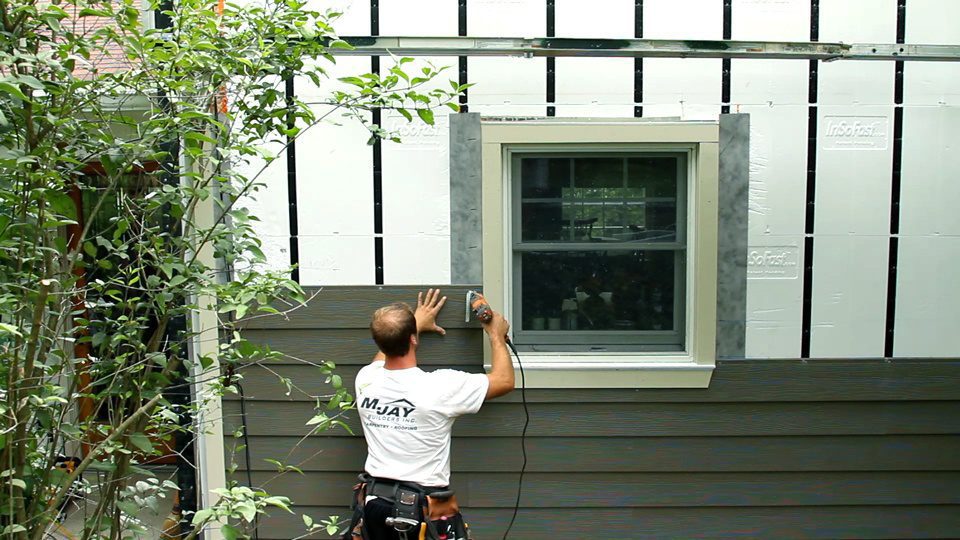Have your heating and cooling expenses skyrocketed in recent years? The time has likely come to upgrade your home’s insulation. The best way to insulate existing exterior walls is with InSoFast insulation panels.
InSoFast insulation panels aren’t the only option for exterior application. Homeowners can choose to hire a professional to spray in foam, cellulose, or other insulation through holes that the pro drills and fills in afterward. We find at InSoFast, LLC, that our clients are interested in DIY-level materials that don’t require any lowering of expectations regarding effectiveness.

Various Types of Insulation
Fiberglass – the most common insulation style, this insulation consists of very fine glass fibers. It will settle over time, absorb water when exposed, and require access to the wall cavity.
Cellulose – often made from recycled paper, this insulation is treated for fire and insect resistance and can be injected into the wall cavity through holes drilled in the exterior. However, the dust from the insulation will travel through ducts and outlets and requires professional installation.
Foam – foam insulation is available in spray and panel/board foam. Spray can be injected directly into existing walls through drilled holes. Some panels require access to the wall cavity, but others, like InSoFast insulation panels, can encapsulate the home as it stands.
InSoFast exterior insulation panels work well to prevent the transfer of air and vapor in both directions. The features of our panels make installation simple, promote weather resistance, fit within your budget, avoid the costs of labor, and support various finishing materials to complete the project.
The Flat Panel EXe 2.5 panels themselves are made from closed-cell EPS foam. They’re not heavy or bulky at 2’x4’x2.5” and work for fully insulating the home’s exterior walls with R-10 continuous insulation and moisture mitigation channels on each side of the panel. The system connects tightly with no gaps in coverage, making them outperform fiberglass insulation with R-15 on the label.
Install the panels directly over the home’s current resistant barrier or house wrap to create a secondary weather resistant barrier. When complete, the insulation system creates a capillary break between wooden framed walls and the sheathing that follows.
Various finishing materials up to 2” thick, including stucco, vinyl, stone, and more, will find purchase with the polypropylene embedded studs within the panel. They’re sheathed within the insulation and completely non-conductive, yet they have the same strength as 20-gauge steel studs. The finishes you choose can be single or multiple in nature, so one home can transition from one finishing material to another without causing problems with the protective materials beneath.
The installation process doesn’t require taping, a large construction team, specialized tools, or expert-level skill. In fact, you’ll only need a utility knife, saw, method of application, and sealant foam. The panels can be applied with construction adhesive, masonry adhesive, or nails or screws.
Take the R-value beyond code with the InSoFast PLUS system. It allows you to add rigid foam board insulation over the InSoFast insulation system for a cumulative R-value.
We invite you to order a sample kit to evaluate the panel features, size, etc. When you then order a full project supply, we will deduct the cost of the sample from the overall price of your panels.
The best way to insulate existing exterior walls is with InSoFast exterior insulation panels. Check them out even more through our website or by calling (888) 501-7899 to speak with our team!


